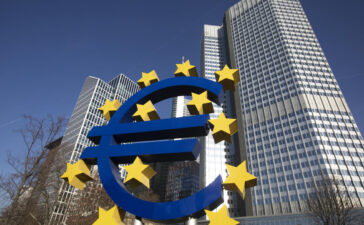Traders are ramping up bets for a deeper divergence between European and US interest rates, setting the euro on a clear path for further weakness.
The currency fell to its lowest in nearly two weeks as soft inflation readings from Germany and France strengthened the argument that the European Central Bank (ECB) will continue monetary easing this year following a rate cut on Thursday (Jan 30).
The Federal Reserve kept rates on hold on Wednesday and hinted at a pause, ensuring the US dollar remains a much more attractive currency.
The question is how deep the euro’s decline will turn out to be, with many forecasters betting that parity with the US dollar is possible in the coming months. Traders are now fully pricing in three more cuts by the ECB before the end of the year and predict there is a roughly 20 per cent chance of a fourth reduction. The central bank may have to go deeper following US President Donald Trump’s move to impose punitive trade tariffs.
“The central bank meetings confirm the divergence in policy,” said Matthew Landon, a global market strategist at JP Morgan Private Bank said. Tariffs could further widen that gap, “bringing the possibility of euro-dollar parity back into contention”, he added.
Market pricing reflects the view that the ECB will cut its deposit rate to around 2 per cent by the end of the year, after the central bank lowered it to 2.75 per cent on Thursday. Pictet Wealth Management sees the rate falling to 1.75 per cent this year, while Franklin Templeton expects policymakers will keep cutting until it hits 1.25 per cent.
BT in your inbox

Start and end each day with the latest news stories and analyses delivered straight to your inbox.
The prospect of deeper rate cuts has pushed German bonds higher, with the two-year yield falling to 2.12 per cent, its lowest level in four weeks.
“Europe and the United States are on two very different paths,” David Zahn, head of European fixed income at Franklin Templeton, wrote in a note. The prospect of deeper cuts is “supportive” for European bonds, especially shorter maturities, he added.
Data published on Friday show a fall in regional German inflation and an unexpectedly steady reading of French prices. That follows a Thursday release showing that eurozone growth stagnated in the fourth quarter. At the same time, solid US growth adds to the argument that the Fed will hold off easing.
Options traders are bearish on the euro across tenors, while the premium to hedge against short-term weakness has doubled since Wednesday. Meanwhile, the total notional of trades targeting a euro drop to parity with the US dollar doubled in January from the previous month, according to the Depository Trust & Clearing Corporation.
“Parity is still possible if the strong run of US data continues, or Trump comes out with tariffs,” said Van Luu, global head of currencies at Russell Investments. Political turmoil in France and risks associated with elections in Germany next month will also be a drag on the currency, he noted.
On the other hand, potential positive catalysts for the currency include a ceasefire in Ukraine, and an election in Germany that results in some kind of willingness to tackle the country’s structural problems, Luu added. BLOOMBERG














